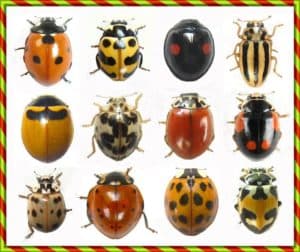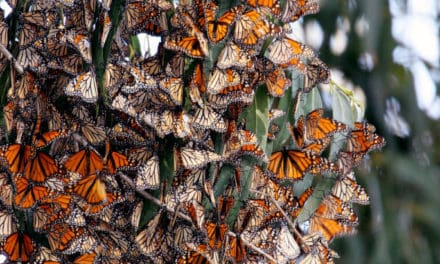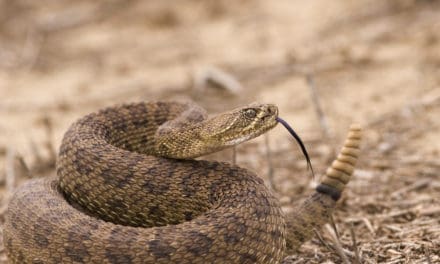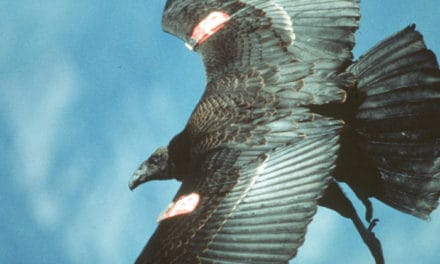By Jim Moore, Entomologist
♪ “On the twelfth day of Christmas my true love sent to me: twelve Ladybug beauties, eleven chocolate candies, ten Springerle cookies, and some mistletoe in the doorway.” ♪
Well, I am not going to say which was my favorite, but the most peculiar was the twelve Ladybug beauties. Where she found them in the middle of winter she would not exactly say, except that these twelve, shown in the photo, were found in various locations in Northeastern California.
Some folks call them Ladybugs; others call them Ladybird Beetles; still others call them Lady Beetles. Along with Butterflies, these colorful little beetles are among the very few insects to have gained the almost unquestioned affection of people of all ages.
Kids love them; authors of children stories love them, whimsical artists love them, and of course gardeners love them! When a ladybug lands on someones arm they do not react with fear; rather they sing them a song: ♪ “Ladybug, ladybug fly away home, Your house is on fire and your children are gone.” ♪
Our Ladybug friends usually show up in the spring time when their favorite foods, such as aphids, mealy bugs, mites, and other such tiny bugs begin to multiply on plants. They begin laying their bright yellow eggs in various locations on infested plants. Soon the little lady bug larva, which kind of look like tiny alligators, join the adult lady beetles in depopulating the parasites. Not all ladybugs are predators; some like the Twenty-Spotted Lady Beetle feed on plant mildew; and a few feed on various plants.
In California there are about two hundred different ladybug species, most of which display unique colors, spots, stripes, and patterns. Some species like our native Two-spotted Lady Beetle and the imported Asian Lady Beetle sport many different color and spot patterns.
Of course, during our colder Nor Cal winters we do not usually see them flying about or munching on those little aphid pests in the garden. But they are out there hibernating somewhere, often congregating in sheltered winter homes by the thousands. For these ladybugs at Christmas time, there is no place like home!












